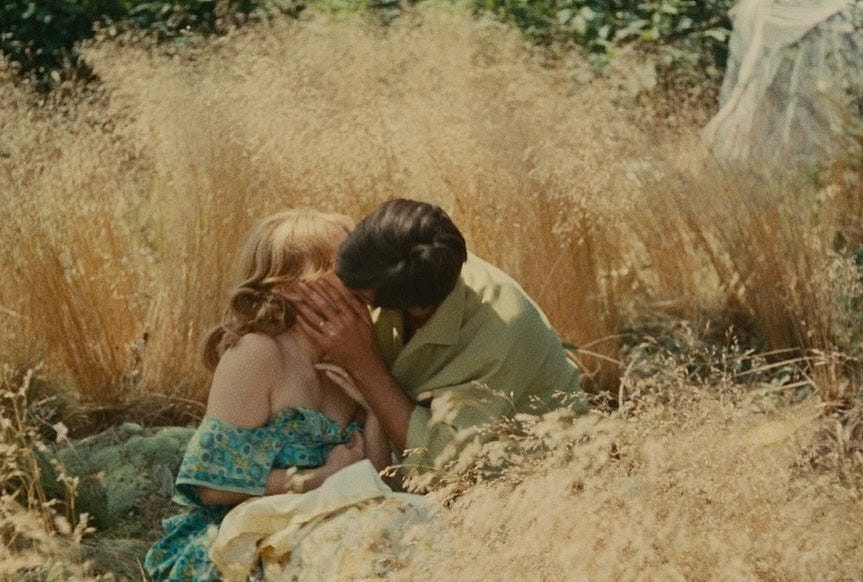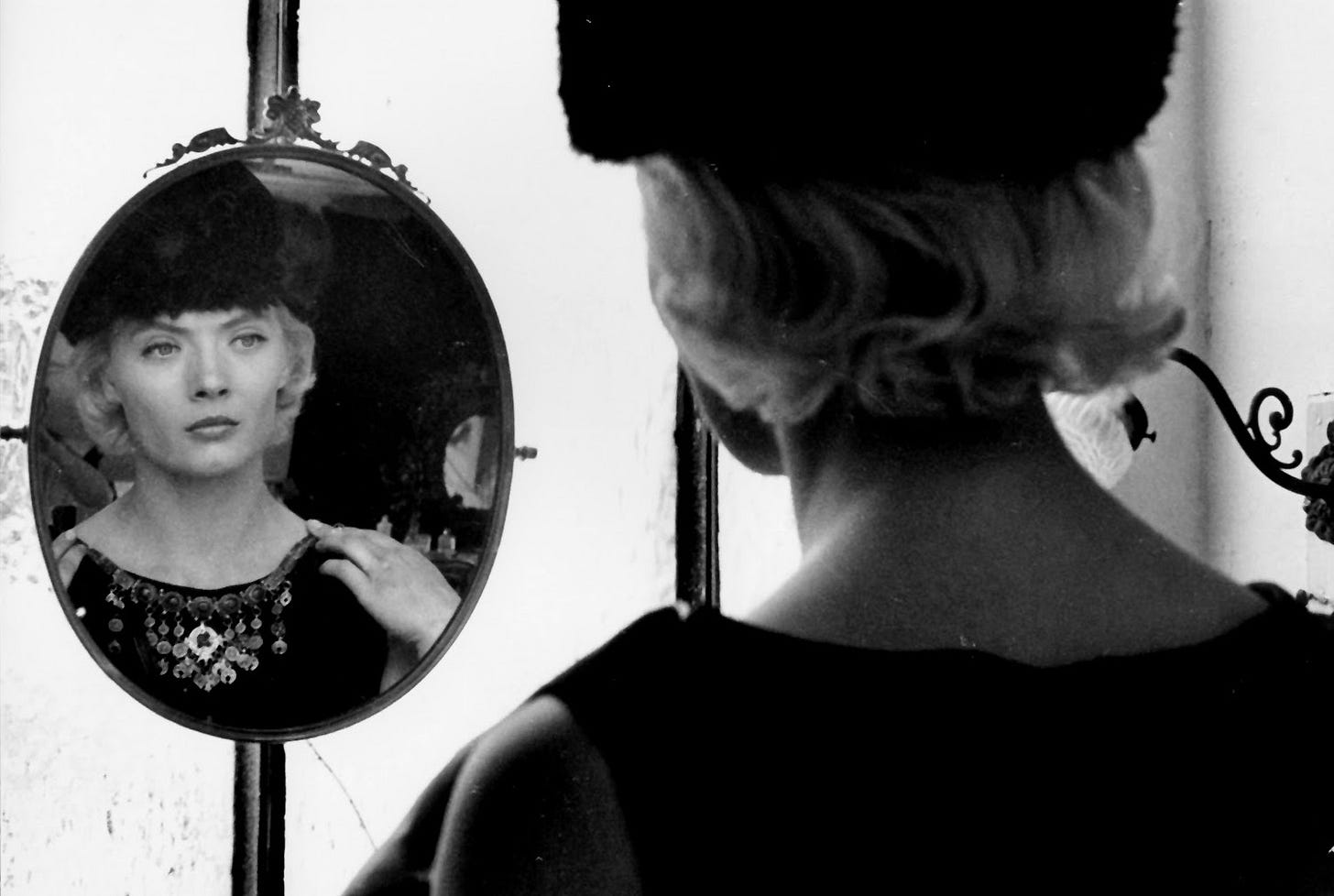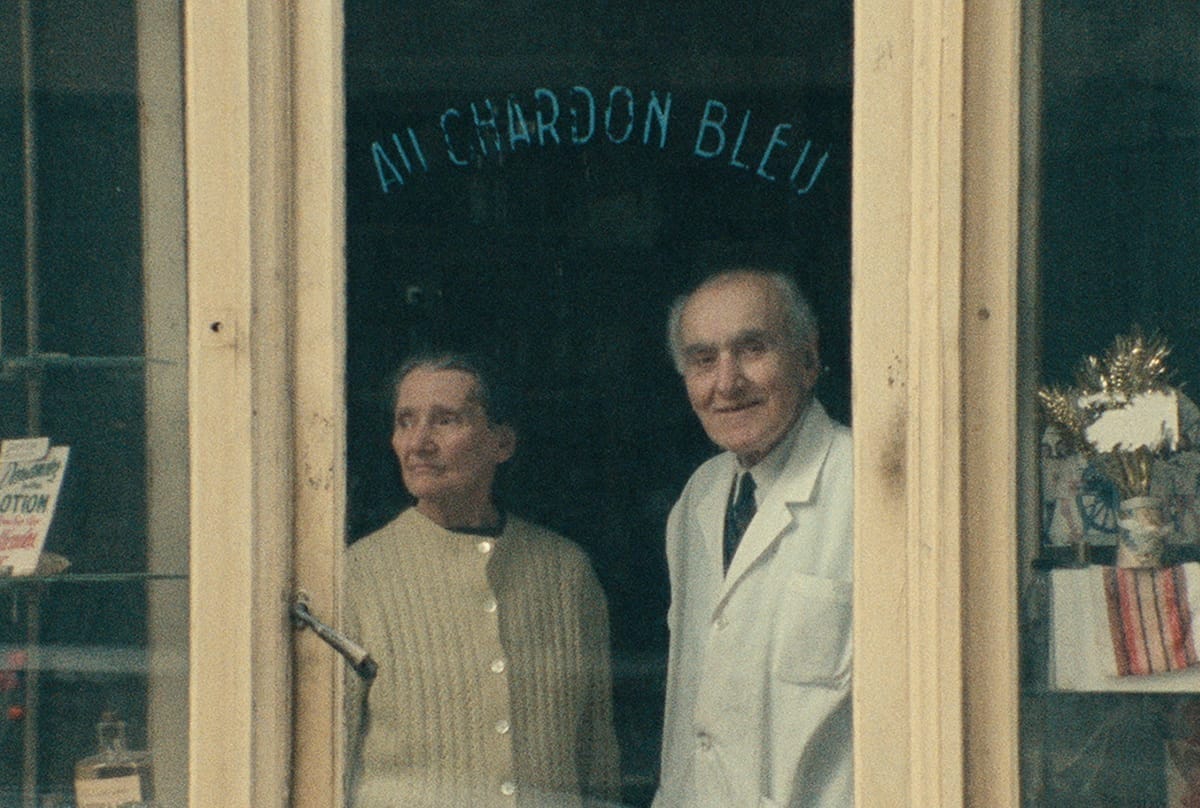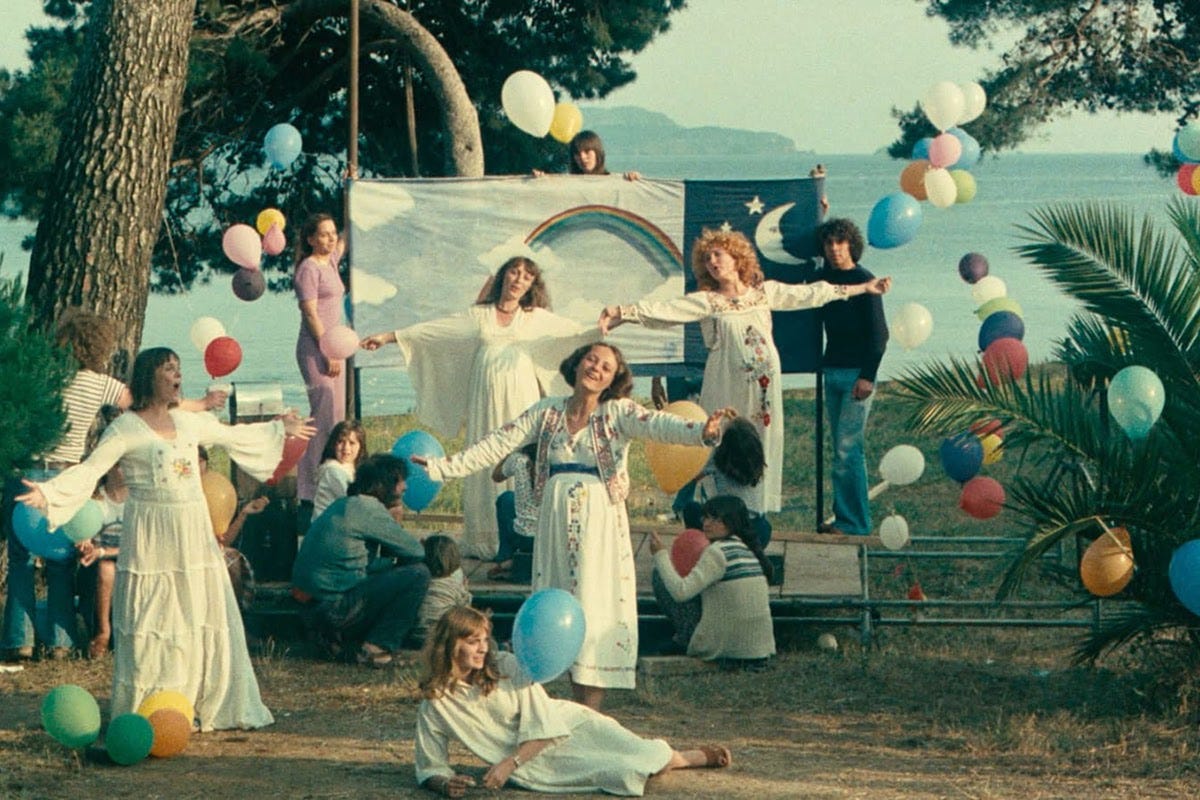
Realist, whimsical, charming and crude: these contradictions and more describe the experimental style of the late and great Agnès Varda. Widely credited as one of the main proponents of France’s “Left Bank” group of filmmakers during the French New Wave, the feminist auteur’s creative blend of narrative and documentary filmmaking led to a prolific career spanning over six decades. Reflecting a deep-seated love for all mediums of film, the illustrious body of work she left behind in 2019 includes 22 features, over 30 shorts and even a travelogue miniseries — most of which is currently streaming on The Criterion Channel.
I spent the last few months attempting to marathon all of Varda’s work chronologically. As I finish, I’m left with vivid memories of rural France, the Riviera, Parisian market streets and 1980s L.A. Because I could’t limit myself to discussing just one film by the pioneering director, I got four friends and fellow Varda fans to write about their favorites as well.
The following are five different takes on five of her best works. As with my Almodóvar survey, snubs were inevitable, so we highly encourage you to explore or revisite what’s beyond our list.
Documenteur (1981)
By Ursula Muñoz-Schaefer
Few films capture loneliness the way this one does. Alternatively titled Documenteur: An Emotion Picture, this naturalistic character study of a divorced immigrant mother attempting to build a life for herself and her son in L.A. might just be Varda’s most intimate work of fiction. Static shots compose much of the film, as the camera observes unwitting passersby, capturing real-life conflicts in the spaces our fictional characters inhabit. The voyeuristic effect translates to our embracing of the protagonists, too. In one vulnerable instance, we sense Emilie’s dissonance with her body and her surroundings when she strips down in a house that’s not hers, questioning her desirability as she looks in the mirror.
For all of the time that we spend alone with Emilie, the outdoor sequences amidst the imposing city are just as vital in communicating her sense of displacement as an immigrant, which is reciprocated by the hardships of many others who struggle to make ends meet. Paired with Mur Murs (1981)—Varda’s documentary about the L.A. murals, which she filmed at same time as this—Documenteur also serves as a historic time capsule for the tumultuous period it takes place in, and those who pay close attention may even spot a narrative thread connecting both movies. Clocking in at just over an hour and featuring exquisite performances from Sabine Mamou and Mathieu Demy (Varda’s own son), I’d argue this a must-watch for fans of the French filmmaker, as well as a perfect starter for the uninitiated.
Ursula Muñoz-Schaefer is a writer and reporter from Puerto Rico, and the creator of Reading From Top to Bottom. You can follow her on Twitter @UrsulaMunozS13.
Le Bonheur (1965)
By Manish Mathur
A prominent voice in the French New Wave, Agnès Varda has since become the symbol for feminist filmmaking among cinephiles. During the pandemic, I watched a good number of her feature films on the Criterion Channel and found them illuminating, intoxicating, complicated and gorgeous.
Among her many masterpieces, one film stuck out to me the most. Le Bonheur feels a bit more ostentatious than her other works, in no small part due to the lush, vibrant aesthetic and lyrical dialogue. Its feminist throughline is sneakier too. Unlike Cléo from 5 to 7 (1962), One Sings, the Other Doesn’t (1977) and Vagabond (1985), which directly address feminist themes with a clear focus on women and their agency, Le Bonheur exists in some male fantasy world. The film centers on Francois, a typical guy who has a devoted, sexually available wife named Therese, but falls into a lusty affair with Emilie, an almost-replica of her. The man gets to have it all, with both women seemingly okay with the arrangement.
It’s all a bit too beautiful and too perfect, as Francois justifies his indiscretions. But as the film unfolds, Varda shocks her audience with a finale that dabbles into magical realism. Varda’s use of artifice and irony is quite effective, as she seeks to expose the hypocrisy and myopia of middle class life. Where Francois thinks he found the magic trick to have his cake and eat it too, it comes with a cost. But to whom? Silence and complicity mark both Therese and Emilie, who are both a far cry from the intensely powerful women of One Sings. Perhaps they too have their own opinions and interiority, but Francois lives in his dream world where he can’t even fathom that.
Manish Mathur is a writer and podcaster. You can find him on Letterboxd and on Twitter @themanish89.
Cléo From 5 To 7 (1962)
By Gabriel Cambre
Cléo fears she may be dying of cancer and anxiously waits for her test results. The tarot reader provides no comfort. Her maid feeds her worries with arbitrary superstitions. Her rich, older lover is far too busy to take her illness seriously. Her colleagues in the music industry don't respect her as a singer or as a woman. Strangers recognize her as a famous artist and they all seem to say, albeit indirectly, "What could she have to be worried about? She's young, beautiful and successful." In this man's world, can Cléo find the courage to face her possible cancer diagnosis and discover true happiness?
Crafting uniquely feminist stories with unmistakable skill and flair, Varda was one of the greatest iconoclasts of French cinema in a myriad of formidable talents such as François Truffaut and Jean-Luc Godard. With fact, fiction or sometimes both intertwined, Varda captured the inner conflicts of French society and identity of the French woman. In her stream-of-consciousness masterpiece Cléo from 5 to 7, Varda's maverick sensibilities and compassionate eye are in full bloom as we follow two hours in the life of the titular Cléo.
Far from a figure of pity, Cléo is a woman afflicted by early-60's malaise and struggling to reclaim her identity in the face of possible tragedy and the indifference of her peers. The camera loves her and we in turn fall in love with her, while the film is further supplemented by a beautiful union of warmth, mirth and pathos in Varda's direction, the swelling, heightened emotion in Michel Legrand's score and a remarkable lead performance from the luminous Corinne Marchand.
"I think my fear is gone. I think I'm happy," she says.
We're not, now that Agnès Varda has left us.
Gabriel Cambre is a writer from Boone, North Carolina. You can follow him on Twitter @cambregabriel19.
Daguerréotypes (1975)
By Brandon Streussing
Ladies and Gentlemen… it’s my honor to present to you a film called: Dagurréotypes.
So says Mystag the Magician, standing in front of the Eiffel Tower at the start of Agnès Varda’s Daguerréotypes. Showing her hand immediately, magic is inextricable from the mundane to Varda.
Set on a small street outside of her apartment, Daguerréotypes is a love letter to the people who keep life bustling. Butchers, bakers, grocers and most importantly to her, the owners of The Blue Thistle, a fragrance store “suspended in time.” As we weave in and out of the lives of the working class, Varda isn’t interested in sensationalizing them. Instead, through her long, gazing takes, she offers a glimpse at those everyday sparks of life existing beneath her window.
Watching Daguerréotypes in 2021 hits like a gut punch. There’s certainly a sense of “back in my day” to lamenting the robotization of shopping, but Varda makes it impossible to not be emotional. Less interested in the importance of human connection through words, she drops you in as an unseen ghost, experiencing a time and place that’s now a distant memory. Cutting between Mystag’s magic show and the “normal” goings on in this expansively compact world, you’re overtaken by an overwhelming awe.
Fetishizing tactile experiences in a world where that’s become rare is easy, but in Daguerréotypes it’s impossible not to. Never more so than when she guides you into a butcher shop. A static shot of the butcher cutting a flank of meat, her camera slowly glides from him to a customer, closing on their faces, sometimes impatient, sometimes nonplussed and then back to the butcher, rhythmically lulling you into a trance. It’s transportative cinema at its very best because of Varda’s boundless empathy.
Which brings us back to The Blue Thistle. Owned and operated by an elderly couple, the husband performs his daily tasks while his wife stares longingly out the window. She suffers from what might be dementia, and it would be easy for Varda to build her whole thesis around them. Elderly owners, a dying shop, the future’s oppressive shadow around the corner. She’s not chasing sentimentality though. Every day, like clockwork, they’re in their shop doing what they’ve done seemingly forever. And in some form, thanks to Varda’s desire to capture the world around her, they’re still there. Just like the butcher, or the mechanic, or Mystag himself. Suspended in time.
Brandon Streussnig is a freelance film writer based in Pittsburgh, PA. You can find his work at The Playlist, Film Combat Syndicate and The Movie Sleuth. You can follow him on Twitter @brndnstrssng.
One Sings, the Other Doesn’t (1977)
By Zachary Morgason
Selecting a favorite Varda feature is an impossible choice. The director spent much of her career blending fact with fiction, leading to a catalog of hybridized works and a slew of stories whose drama is heightened by true-to-life detail. With its bold colors and musicality, One Sings, the Other Doesn’t scans almost like Varda’s version of a Jacques Demy film; a lyrical flight of fancy that brings France to vivid life. Where she deviates from her husband’s efforts is that on top of the pure romance, One Sings’ stylish artifice gives way to an ode to femininity, charged with the beauty, hardship, tragedy and triumph that the concept implies.
The movie is structured around long-distance correspondence between two women — Suzanne and Pomme, sisters by choice — each living separate, frequently messy lives that allow for expansive exploration. In the first act alone, the picture explores marital and financial strife, the rigors of being a father’s only daughter, seeking a(n il)legal abortion, suicide, single motherhood and above all, finding one’s own agency and identity amid society’s modern and regressive gauntlet. Once the two women separate, the boundaries only expand.
One Sings, the Other Doesn’t is a film that positions womanhood not as something given, but a choice made—something earned. As the tagline intones, one is not born a woman, but instead becomes one. In one sense the case is made that the challenges are what define it, but in truth, it is defined by unity. Pomme and Suzanne, though separated from each other, are steeled by their shared affection, and each becomes a stronger and more independent individual the more they immerse themselves in the loving world of their fellow women. Specifically, this happens through each woman’s crusade for women’s reproductive rights, a process that allows Varda to hone her empathetic eye to impart a message: every woman has a story, if you only have the curiosity and vision to seek it out.
And in those visions of women’s lives, a critical lesson is imparted: that unity isn’t about uniformity, but instead about solidarity. After all, one sings, and the other… doesn’t. The fabric of femininity, just as the whole of humanity, is defined by what makes each person unique. All of womanhood is connected through not one set of common experiences or attitudes, but the multitude of all experiences, held together by the strongest love that exists.
Zachary Morgason is a writer from Dallas, TX whose work can be found on Medium. You can follow him on Twitter @zmorgasboard.









